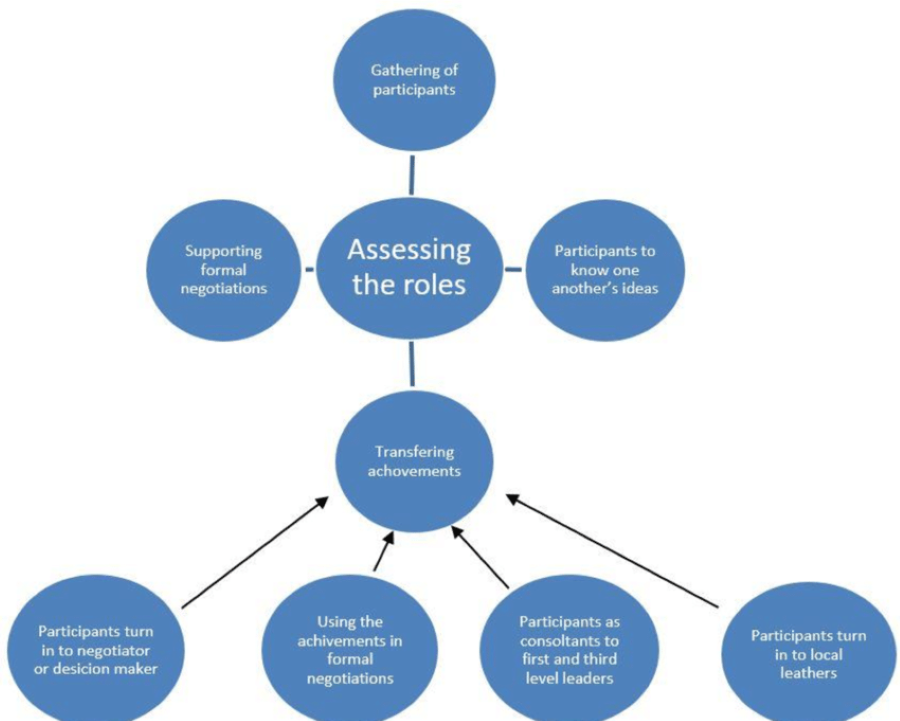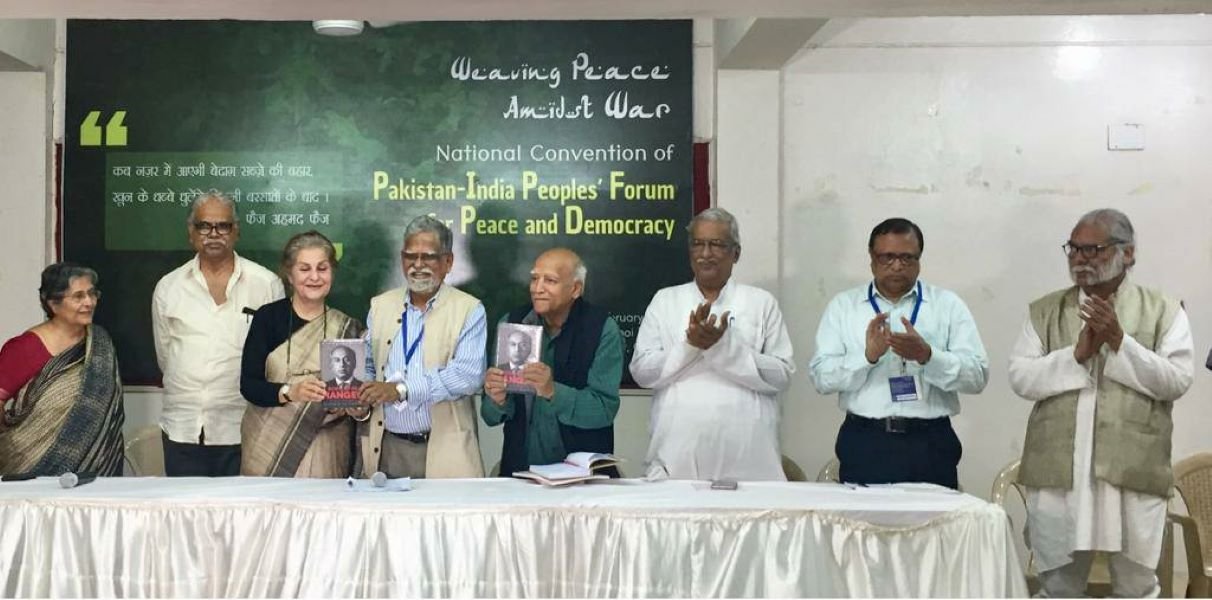The term track two diplomacy was formally used in 1981 by Joseph Montville in the periodical Foreign Policy. It refers to a broad range of unofficial contacts to resolve conflicts, both internationally and within the states.
Montville coined the term in contrast to track-one diplomacy, which means diplomatic efforts to or manage resolve conflicts through the official channels of government.
According to Joseph Montville, track two diplomacy in International Relations is an “Unofficial, informal interaction between members of adversary groups or nations that aim to develop strategies, to influence public opinion, organize human and material resources in ways that might help resolve their conflict.”
The main bodies in this type of diplomacy include high-class academics, business groups, Non-Government organizations, and religious entities.
Historical background
In 1960, a US U-2 drone spy plane entered the USSR territory. It was shot down by the armed forces of the Soviet Union. This created more hostility between the two rival countries.
After that incident, Norman Cousins, a friend of former US President Eisenhower, arranged a meeting between unofficial envoys of America and the Soviet Union.
That meeting led to the inclusion of Track Two diplomacy in International Relations, which consists of non-official actors (a combination of academics and ex-officials).
The agenda of this type of diplomacy is to discuss mostly the differences the states have. Track Two diplomacy has played an important role in reconciling and exploring new policy options for resolving conflict situations, especially between nuclear power countries.
Track two Diplomacy was developed based on the observation that it was easier to find mutual consent in unofficial private meetings, which government officials or negotiators cannot find.
During the cold war era, this concept emerged as a conflict prevention and resolution approach. Earlier, the term track two diplomacy was mainly focused on the work of diplomats in conflict management.
The diplomats were used to bring together informally to generate innovative solutions to international and state conflicts that remained unresolved at the official governmental or track-one level.
The socially, economically, and politically marginalized groups are empowered by Track Two as it gives them a forum from which to express their ideas about how to bring about peace in their respective communities or countries.
How does Track Two work?
The participants of all the parties conduct meetings and exchange their ideas for negotiations on matters considered points of conflict. Then, they mutually agree on the best possible solution to those contentious points. Track Two Diplomacy works well in both pre-and post-violent conflict situations.

Characteristics of Track Two Diplomacy
Track-Two diplomacy is also termed “Interactive Conflict Resolution” (ICR) in the terms of the International as it is based on discussions that are informal and non-governmental in nature.
In this process, official leaders are assisted in exploring solutions without formal negotiations and bargaining for advantage.
It also focuses on creating an environment of public opinion that allows political leaders to take risks to maintain peace.
Track two Diplomacy, due to its nonofficial nature, encourages psychological and cultural understanding while addressing human aspects and overcoming barriers of track one approach due to its emphasis on civil society interactions.
Cooperation-based negotiations are used that ensure economic development in conflict zones as well, providing incentives and Institutional support to leaders.
This type of diplomacy has been used in various conflict-ridden zones of the world because of its inherent problem-solving capacity. One of the examples is the case of India-Pakistan.
Track Two’s relevance with Pakistan-India relations
Pakistan and India relations have often gone through political complexity mainly due to the Kashmir issue since the two states’ partition in 1947.
Their partition was based on the Two-nation theory that hypothesized the differences between the two religions and reflected the impossibility of the existence of Muslims and Hindus as a single nation.
The Kashmir conflict also led to three major wars fought between the two states in 1947, 1965, and 1971.
There have also been several localized military confrontations; for instance, Operation Meghdoot and Operation Brasstracks happened in 1984 and 1986, and the Kargil war of 1999.
The relations between India and Pakistan also suffered in the late 1990s after the terrorist attacks in Mumbai and Pathankot. Track-two processes also began in the decade of 1990s and helped to create links between civil society members in both states.
Neemrana Dialogue
The first initiative of track two between Pakistan and India was the Neemrana dialogue at the Neemrana fort of Rajasthan. It was started by United States Information Services (USIS) members in 1990, and later, it was joined by American and German non-governmental organizations.
It consisted of interactions and meetings between former diplomats, NGO workers, former military personnel, and academics. However, they were not supported by the Foreign Ministries of both states.
The dialogue was revived in 2018 after post-surgical strikes and the Kul Bhushan Yadav case, which led to deteriorating relations between the two states.
During the dialogue, former secretary of the Foreign Ministry of India, Vivek Katju led the Indian side along with other experts. At the same time, the Pakistani side included former minister Javed Jabbar and other negotiators.
Their meeting happened in Islamabad, Pakistan. It involved discussion on various issues, including the Kashmir conflict, Siachen, terrorism, and tensions on the Line of Control. They also discussed the regional situation, including Afghanistan.
Shanghai Initiative
Shanghai Initiative started in 1994 and remained operational till 2000. It consisted of 4 major members, including the United States of America, Pakistan, India, and China. The US Alton Jones Foundation funded this program.
The group consisted of six to seven members. They were formerly known as scientists, military officers, and diplomats. The program mainly focused on the nuclear technology and capabilities of the member states.
The members used to hold yearly meetings in either of the states, respectively. During their interactions, the group discussed the pros and cons of nuclear power and its future implications.
After the nuclear tests by Pakistan and India in 1998, the importance of the group became more vital. The members presented their states’ policies that were unofficial, but it created a strong sense of understanding among the group participants.
Along with that, the members also discussed the newly emerged security parameters.
The participants had the point of view that the security dilemma of India-Pakistan has entirely changed in previous years. According to them, it will further leave a long-lasting impact on the relations between the two states.
Balusa and Pugwash Group
Another Initiative was by the Balusa Group between the years 1995 to 2003. Its members tried to solve specific issues. Somehow the group achieved progress in opening communications and initiating peaceful solutions unofficially.
In 2004, the Pugwash group managed to bring together Kashmiris from both sides of the long-running conflict for the first time in decades. A formal peace process then followed it.
Some other Track two Channels
Initiatives included Pakistan India People’s Forum for Peace and Democracy. This was successful in such a way that it opened Rajasthan rail links. It also created ease in visa regime issues.
It also included releasing fishermen from prisons and encouraging cultural and sporting exchanges between the people of the two states. That forum also initiated trade operations in Kashmir as well as Punjab borders.

There have been other initiatives that helped in reducing war hysteria among both states by improving relations. These included Chaophraya Dialogue which was jointly initiated by the Jinnah Institute (JI) and Australia India Institute and it has been working since 2008.
It has improved the two sides’ business communities and turned more active regarding non-official efforts in promoting peace and friendship.
The Ottawa Dialogue, a collaboration of the United States Institute of Peace and the University of Ottawa, has also been working to prevent nuclear conflict between the two states.
A Joint Pakistan-India Chamber of Commerce was also started by the business groups of the two sides and proved to be a useful attempt in this regard.
WISCOMP (Women in Security, Conflict Management and Peace) group has also conducted regular workshops. It also conducted interactions to promote cultural peace between the two nations.
Some Weaknesses of Track Two
On the other hand, Track two diplomacy also has some weaknesses, such as its representatives that conduct negotiations have limited opportunity to influence the Foreign policy of the state directly. Along with it, this process might take a much longer time to determine results.
As track two participants don’t possess much political power, they aren’t accountable to the public if they make poor decisions. This approach needs to be changed because they are responsible for their choices.
However, it is safe to say that Track two diplomacy has been notably significant in the Cold War and in releasing tensions between India and Pakistan relations.
It has proved to be a vital tool for conducting negotiations between two states, and positive outcomes in the future results might also be achieved if it continues.
*The author is a student of International Relations at Kinnaird College for Women
**The views, opinions, findings, and conclusions or recommendations expressed in these papers and articles are strictly those of the author(s). They do not necessarily reflect the views of The Diplomatic Insight and its team, nor does The Diplomatic Insight take any responsibility for the authenticity of the stated facts and events
Senior year student of International Relations at Kinnaird College.







